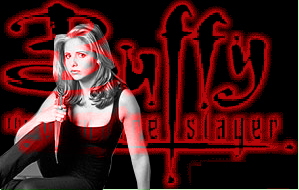
By Mary Matus
Spoiler alert: Contains important plot details about the series
If someone had told me 11 years ago I would identify so
strongly with a character named Buffy, I probably wouldn’t have believed
it. The premise itself sounded odd to say the least -- a vampire-fighting
cheerleader. But now that "Buffy the Vampire Slayer" is ending
after seven seasons, I feel as if an old friend is going away. It just
goes to show, you can’t judge a book by its cover, and you can’t
judge a person by his or her name.
I watched the Buffy the Vampire Slayer movie as a
teenager. The movie was not the best I had ever seen. In fact, it was
rather cheesy at times; however, it made an impression on me. The movie
reversed the roles of the hero and the “damsel in distress."
Kristy Swanson’s Buffy spent much of the movie protecting Pike (portrayed
by Luke Perry). In addition, the teenage protagonist was allowed to be
both feminine and tough, a rarity in action movies.
When I learned five years later there was to be a series
based on the movie, I eagerly awaited its premiere, to see if the show
could measure up to the movie. It didn’t just measure up; it was
even better than I expected.
Sarah Michelle Gellar portrayed Buffy with a combination
of strength and vulnerability. One scene would depict her leading her
friends into battle. In the next scene, she would be wondering if she
would ever have a normal life.
There are many reasons I have loved watching Buffy and why
the series should be regarded as a landmark show.
In season four, Willow (portrayed by Alyson Hannigan) came
out of the closet and began dating fellow witch Tara (portrayed by Amber
Benson), neither of which was sensationalized by the show. Despite the
anger of fans over Tara’s eventual demise, Joss Whedon and his creative
team should be given credit for the show’s realistic portrayal of
a lesbian relationship.
Although the show may be categorized as a horror/action
type of show, true fans will know that is only part of what the show is
about. Whedon has stated in several interviews over the years that the
show is meant to represent the horrors of high school life (and life in
college and as a young adult). In addition, the friendship between the
three main characters, Buffy, Willow and Xander has been the glue that
holds the series together.
Whedon has never been afraid to play with viewer expectations.
Among the many plot twists over the years: The vampire Spike, who was
introduced as a villain in season two, eventually returned to fight with
the Buffy gang two seasons later. Xander became engaged to a former vengeance
demon, Anya. When the wedding never happened, Anya went back to being
a vengeance demon. Buffy appeared to have died during the end of season
five, leaving many viewers wondering if there would be a season six. Buffy’s
best friend, the formerly shy Willow, became a powerful witch and turned
to the dark side in the season six finale.
There have been several standout episodes. In “Once
More, With Feeling” Whedon shows what would happen if Buffy was a
musical. In “Hush,” there is no speaking for over half the show.
“The Body” dealt with the death of Joyce, Buffy’s
mother. There is one demon attack at the end, as if to show life must
go on, but the episode centers around the death and the characters’
reactions.
But perhaps the thing the series should be remembered for
the most is the new feminist role model it has introduced to television.
Over the years, there have not been a wealth of strong female
characters on television. In the late 1970’s there were a few: "Charlie’s
Angels," "The Bionic Woman," "Wonder Woman."
However, these were mostly written in a cheesy, over-the-top style which
made it hard for young women to really relate to these characters.
Buffy was different. Buffy wasn’t perfect. Buffy had
faults. In the Buffy movie, the character was introduced as a snobby Valley
Girl cheerleader whose world is turned upside down when she learns that
not only do vampires exist, but it is her job to kill them. The character
was very realistic. We probably have all known similar people. Eventually
she realizes the strength is in her and, in the process, grows up.
Buffy wasn’t the only admirable female character in
the series. Her best friend, Willow, was popular with viewers, because
young women could relate to her. She wasn’t popular. She was shy
and awkward and considered herself a nerd. One of my favorite parts of
the series has been watching the awkward Willow of the first series grow
into the strong, confident Willow of the later years.
Cordelia, who later moved into the spin-off Angel,
has also been a role model. Cordelia’s initial role was to serve
as Buffy’s protagonist, the self-absorbed cheerleader who was always
butting heads with Buffy and her group of “losers.” As Cordelia
became a member of the “Scooby gang,” she eventually matured
and became less shallow. Her brand of honesty, though, often provided
for many comedic moments. As she says, “Tact is just not saying true
stuff. I’ll pass.” Since the character has been moved to Angel,
Cordelia has been allowed to become a champion, a natural leader who is
often the heart of the group.
Although the show is over, the trend of strong female characters
only seems to be beginning. After Buffy began, shows were introduced including
Alias, Charmed, Witchblade and Dark Angel. And it doesn’t
look as if the trend’s going to stop anytime soon. For that reason,
even though the series is ending, it will not soon be forgotten.